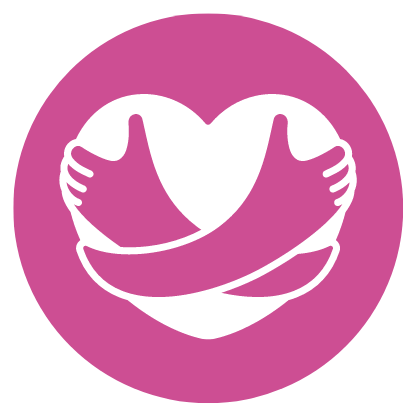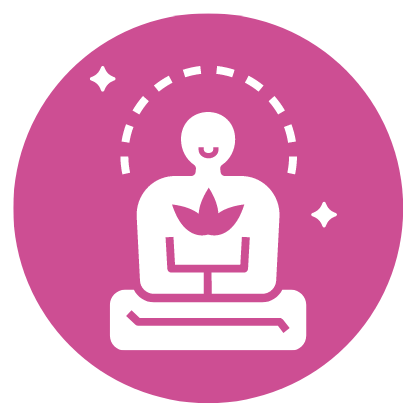How To Coach Clients – Transtheoretical Model | My Dietitian Journey
Reference: My Dietitian Journey. (2020, October 29). How To Coach Clients - Stages 1 and 2 of the Transtheoretical Model | My Dietitian Journey Podcast [Video]. YouTube.
We Make Your Education Count

Get the Credit You Deserve and Become the Most Attractive Job Candidate by Earning and Posting A+ Badges to Your Linkedin Profile.
Sign Up to Get Started at Accredicity
|
Learn the stages of the Trans-Theoretical Model and how to help clients make behavior changes: watch this video now! This video explores how Felicia Porrazza, owner of Pera's Nutrition and My RD Journey, uses the Transtheoretical Model to coach her clients. The model explains how people change behaviors, and comprises five stages: pre-contemplation, contemplation, preparation, action and maintenance. Felicia explains how to recognize which stage a client is in and how to guide them through it at their own pace. The model can be used as a macro approach or to address specific behaviors. Felicia explains that the main goal is to move someone from one stage to the next and that people may recycle through the stages. Learning Outline1. The Trans-Theoretical Model is a way to explain how people change their behavior in regards to any given action. Instructional ContentHow To Coach Clients Using Stages 1 and 2 of the TransTheoretical Model The TransTheoretical Model (TTM) has been used for decades to help people change their behavior and achieve their goals. It is a five-stage model that explains how people move through the process of making a change. This model is used by dietitians, health coaches, personal trainers, and other professionals to help their clients reach their goals. In this article, we will discuss the first two stages of the TTM – pre-contemplation and contemplation – and how to use them to coach clients to make meaningful changes in their lives. The initial stage of the TTM is pre-contemplation. This stage is characterized by a lack of awareness or desire to change. People in this stage are not aware of the consequences of their behavior, and are often unwilling to entertain the idea of making a change. To help the client move toward contemplation – the next stage of the TTM – the coach should focus on creating awareness and providing information about the consequences of the behavior. This can be done through education, discussion, and other forms of communication. Contemplation is the second stage of the TTM and is characterized by an awareness of the consequences of the behavior, but still an unwillingness to do anything about it. Clients in this stage are often hesitant to make a change because they are unsure of the potential outcome or the effort required to make the change. Coaches should focus on creating motivation and helping clients understand the benefits of making a change. This can be done through goal setting, creating a plan of action, and helping the client identify and address any barriers to change. By understanding and applying the stages of the TransTheoretical Model, health professionals can help their clients make meaningful and lasting changes. By being aware of the stages, coaches can more effectively guide their clients through the process and help them reach their goals. Leadership
|

The Trans-Theoretical Model is a way to understand how people change their behavior, like eating more vegetables or exercising more. It has five stages: pre-contemplation, contemplation, preparation, action, and maintenance. As a dietitian, it's important to help your clients move through the stages at their own pace, like going up a staircase one step at a time. You need to be a coach, not an expert, and guide them through the steps. It's like a puzzle - when all the pieces fit together, you can see the bigger picture of making a healthy lifestyle change. Video Quotes"You can't really force people to move through the stages" - Felicia Porrazza Related Quotes1. "We have to remember that change is a process and it doesn't happen overnight." - William Cheung, Registered Dietitian Nutritionist 2. "We all have a different journey, and it's important that we respect that journey." - William Cheung, Registered Dietitian Nutritionist 3. "So it's important to give people permission to be wherever they are, and to respect that they're at different stages in their journey." - William Cheung, Registered Dietitian Nutritionist Competencies1. Coaching Learning Outcomes1. Analyze the five stages of the Trans-Theoretical Model of behavior change and how to recognize them. 2. Evaluate the importance of letting go of being an expert as a dietician and how to approach coaching clients. 3. Synthesize techniques for guiding clients through the stages of change at their own pace. 4. Construct a wellness vision that is composed of long-term goals and smaller pieces. 5. Apply the Trans-Theoretical Model to various behaviors such as nutrition, exercise, and smoking cessation. 6. Create an understanding of how clients may recycle through the stages of change. Sample Answers1. After watching the video, I learned about the Transtheoretical Model, which is a way to explain how people change behaviors. It consists of five stages: pre-contemplation, contemplation, preparation, action, and maintenance. Additionally, there may be a sixth stage, termination. 2. As a dietitian, the Transtheoretical Model helps me guide clients through the stages of change at their own pace. It is important to understand that it is not possible to force someone to move through the stages, and even moving from one stage to the next is success. 3. The Transtheoretical Model can be used on a macro level for a client’s general health and wellness goals, or for specific goals. Additionally, it can be used by an individual to understand where they are in terms of changing their behavior. Felicia PorrazzaFelicia Porrazza is a Licensed Professional Counselor, a Certified Nutrition and Wellness Consultant, and a Certified Health Education Specialist. She is also the founder of Counseling and Nutrition Services, LLC, a counseling and nutrition practice in San Antonio, Texas. She has a Master's degree in Counseling and a Bachelor's degree in Nutrition and Dietetics. She specializes in using the Transtheoretical Model to help her clients reach their health and wellness goals. She has been featured on various podcasts and television shows as an expert in nutrition and counseling. She is also an author of several books on nutrition and counseling. She is an active member of the Academy of Nutrition and Dietetics and is a member of the Dietitians in Integrative and Functional Medicine Practice Group.Felicia Porrazza Learning DesignThese three competencies are key elements to leadership success. Coaching helps to develop people to perform to their potential and foster a culture of collaboration and learning. Healthy behaviors help to create an environment where people feel engaged and motivated. Self-care and wellness are important for leaders to stay physically, mentally, and emotionally healthy so they can be effective in their roles. The best way to develop these competencies is through a combination of experiential learning and the use of the Situational Leadership Model. In experiential learning, students learn through practical application of the concepts. The Situational Leadership Model helps to identify the type of leadership style that is most appropriate for a given situation. This model allows students to practice the different types of leadership in various scenarios, so they can learn to identify the best leadership style for each situation. This model also helps students to develop their coaching and communication skills, as well as their self-care and wellness practices. AssessmentQ: According to the Trans-theoretical Model, which of the following is NOT one of the five stages of change? A. Pre-Contemplation Answer: B. Termination QuestionsCommon Hypothetical Questions: Real-Life Questions: Keywords"Health Coach Certification, "Trans Theoretical Model", "Motivational Interviewing", "Nutrition Coach", "Fitness Goals", "Wellness Vision", "Blood Sugar Control", "Smoking Behavior", "Health Coaching", "Dietitian Expertise". Facts1. The Transtheoretical Model consists of five stages for people to change their behavior: pre-contemplation, contemplation, preparation, action and maintenance. Trends1. Create an online course teaching the 5 stages of the Transtheoretical Model, including interactive quizzes and practical applications. SourceThis learning instructional guidance was formulated using the GPT-3 language model created by OpenAI. ShareAre you helping your clients change their behavior? Learn how to use the Trans-Theoretical Model to guide your clients through five stages of change with respect and success! #motivation #coaching #change #dietitian #nutrition #healthcoaching #fitness #therapy #wellness @Accredicity |







 7 Creds - Leadership
7 Creds - Leadership



